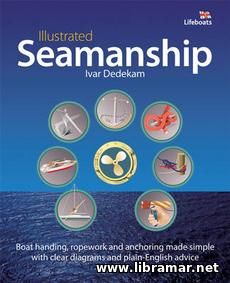 The seamanship is referred to as the art of managing a vessel. The present publication will provide tits readers with the necessary skills considered imperative to keep their boats safe and make a cruising enjoyable and comfortable. In fact, in many cases only some basic knowledge is required to make safe voyages. And this book is intended to demonstrate the readers the minimum number of seamanship techniques they should get familiar with, such as the rope handling, anchoring their boats and maneuvering.
Using the information provided in this book, the readers will be able to better develop their sailing skills though a very fun and interesting way, Each of the techniques presented in the book has been illustrated in a very distinctive style by the author and supplemented with a simple and clearly understandable text. The content of the volume has been arranged in three main sections, with the first one outlining the minimum level of technical knowledge of hitches, knots, splices etc.
The second section covers the techniques required for maneuvering the yachts in harbors and confined areas under various sea and wind conditions. Finally, the third section includes the techniques related to the boat anchoring and provides several real life examples. The book will allow them uncover the art of handling a boat...
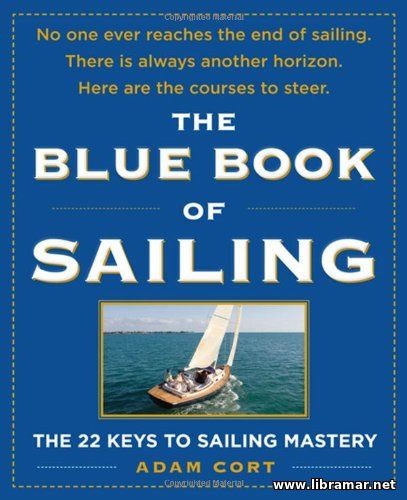 Sailing is considered a very complex and technique- and gear-intensive sport. The present publication was intentionally released to provide all interested people with twenty-two fundamental principles making the core of the sailing-related knowledge; due understanding of the principles explained in the book will help readers attain a genuine mastery.
The volume is mainly aimed at intermediate-level sailors, so-called "practiced novices"; we would not say that it is a best choice for the absolute beginners as the lessons and tips included by the author will only be of use for the people who are already possessing some basics of sailing. But for the intended audience, it is really a treasure, an excellent source of relevant information. It will provide sailors with valuable practical advice on storm sailing, performance tuning, offshore boat cruising, advance sail trim and many other interesting and practically important topics. For people having some basic understanding of sailing, this publication will be a great "next step".
The book will be of great interest for people willing to improve their understanding of the sailing concepts and protect themselves in difficult situations at sea. The content is really outstanding and it has been already met well by the readers in many countries. The author has provided lots of valuable details about the mechanics of sailing etc.
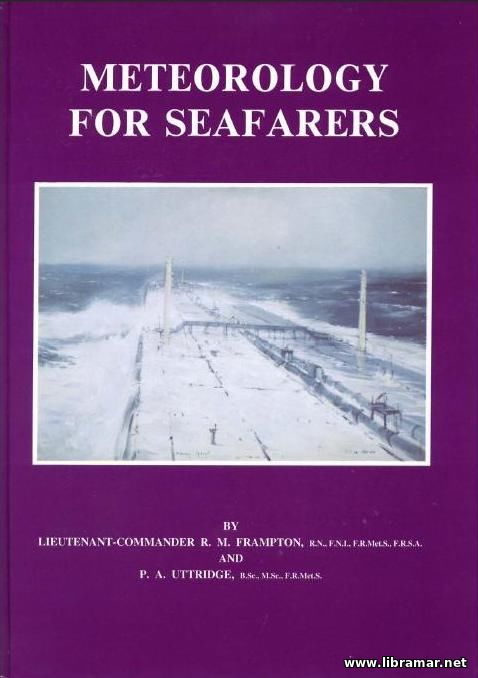 Very useful technical publication explaining all complexities associated with the atmosphere and intented to provide all info required by the professional seafarers to aspire them all to the first-class COC, i.e. certificates of competency. The content starts with the general information related to the meteorology covering the structure, density, temperature, composition and pressure of the atmosphere.
The following chapter is covering atmospheric pressure including isobars and barometers, barographs and pressure tendency etc, while the third one addresses the temperature, touching the temperature observation, energy transfer, radiation and other aspects. The next chapter is dedicated to water contained in the atmosphere covering its states, water vapor, evaporation/condensation, hygrometers and Dew-point, plus relative humidity.
The diurnal variations of the atmospheric pressure, temperature and atmospheric water are also dealt with. The remaining chapters of the volume are focusing on the clouds, providing clear description of their types and rate of the adiabatic lapse, for and precipitation, including visibility, haze and development, winds, including both land and sea breezes and anabatic/katabatic winds, temperate/polar zone circulation including anticyclones, cols and frontal and secondary depressions, subtropical and tropical circulation, proper organization and operation of the meteorological services, and available forecasting sources.
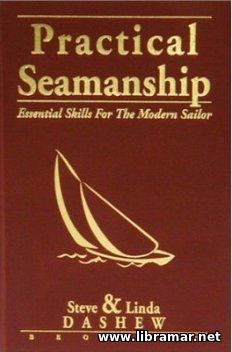 Before the satellite navigation, electronic navigation charts and radars have been invented, people had to get to the art of seamanship only through their practical experience, and subject experience could be either bad or good. They gained practice and improved their boat handling together with the ability for proper and timely reaction to the changes in various situations, and this kept them safe and allowed to get to the destination port.
Nowadays, the boats carry GPS plus lots of other electronic devices. This eventually resulted in a slow loss of the essential seamanship skills that were developed over thousands of years. Contemporary boat electronics are deservedly treated as a really wonderful step forward; however, they shall not be considered a full substitute for the seamanship. The book covers nearly thousand of topics and more than eight hundred detailed and informative illustrations - in fact, this is a very detailed and thorough publication, maybe the best one available.
The readers will definitely get inspired with the depth of the information provided in this publication, covering literally everything from preparation to actual boat handling at sea and working on the deck. Extensive technical information has been provided with regard to the tropical sailing as well as cruising in iced sea conditions.
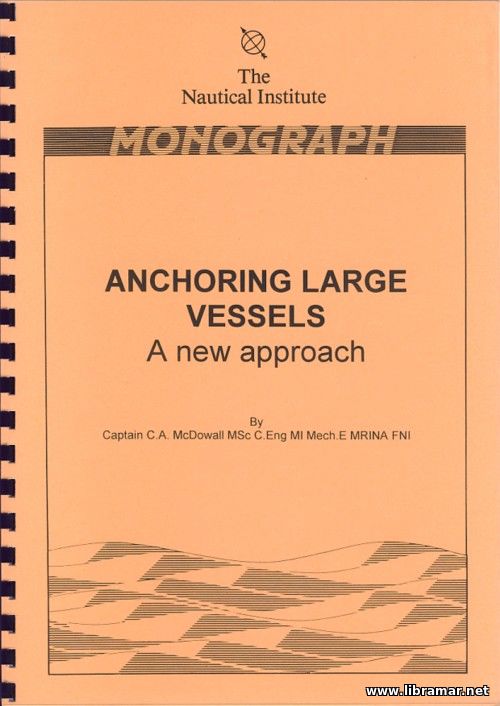 The book was specifically prepared and published to introduce a new approach to the anchoring of large ships. The anchoring systems installed on board large ships are commonly designed within general technical parameters, namely with the anchor and anchor cable being capable of holding a fully loaded ship in a current with a three knots speed and a twenty-eight-knots wind max.
It shall be noted that these systems are not designed and are not supposed to stop a ship with way on, as subject momentum will for sure exceed the limit of the shipboard anchoring system. Generally, there are thirteen shackles and twelve shackles o the starboard and port anchors, correspondingly. The motor of the windlass is designed for the vertical lift of the three shackles plus the anchor's weight allowing for the fifty percent more when testing.
The cable stoppers shall be able to carry nearly twice the proofload applied on the cable with the holding power of the windlass brake being nearly half of the cable breaking strength. The present monographs will describe the basic principles of all associated ship maneuvers and also discuss the limitations imposed to the shipboard anchoring systems which all prudent mariners shall be aware - a truly well-though content of the book makes it very useful.
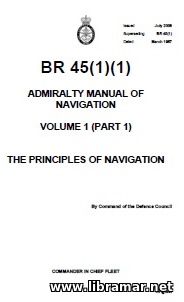 The present official publication is intended to be dealing with the very essential and basic theoretical principles of the marine navigation - such principles would commonly include position and direction on the surface of the planet, charts and nautical publications, map projections, nautical chartwork, fixing and navigational aids, coastal and ocean navigation, pilotage and anchoring, common navigational errors, bridge organization, hydrographic survey and many other aspects considered fundamental.
The appendices placed at the end of the book contain the summaries of the plane/spherical trigonometry, proofs of the various formulas and other useful information. The marine navigation can be referred to as the process of planning of the movement of the various marine vehicles from given point to the destination point.
The present set consists of two separate volumes with the first volume dealing with the position/direction of the Earth's surface, and second one addressing a bit more complex calculations. Even though the navigation technologies of today are rapidly developing, their theoretical fundamentals remain unchanged...
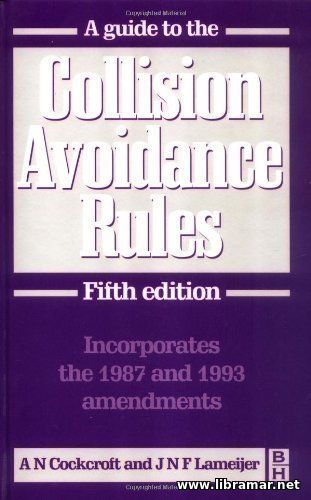 The principal part of this classic and world popular title has been arranged in five major parts with the first one providing general information and remaining four addressing the sailing and steering rules, navigating lights and shapes, sounds plus light signals, and exemptions from the applicable requirements. Four annexes to the rules are detailing the lights, shapes, and sound signaling appliances, cover the distress signals as well as the additional signals for the fishing vessels.
In addition, the volume contains the excerpts from the relevant IMO conventions and recommendations, risk assessment tables, manoeuvring information and descriptions. The list of vessels referred to in the volume has also been provided... For several centuries there have been established official rules in existence developed with the intention to prevent the ship collisions at sea; however, there were no any rules that would have statutory force, until last century.
In the middle of XIX century, a set of rules was drawn by the London Trinity House, and one of those rules obliged a steam ship passing another ship in the narrow channel to leave the other ship on her port hand, while another regulation of this set obliged the steam ships on different courses with potential risk of their collision, to alter the course to starboard in order to pass on the port sides. Some other regulations were there for the ships under sail...
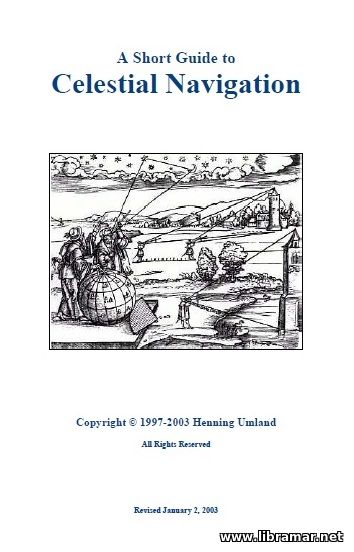 One may ask, why should celestial navigation be used in the age of electronics? However, it would look as if he or she asked why people keep developing classic black and white photographs in their darkrooms instead of utilizing high-color and high-definition digital cameras and associated software. The answer to both question would be - because it is more a noble art and it is fun.
Reading GPS displays is quite easy and not too exciting once you get used to it. But the celestial navigation is always a sort of challenge because all scenarios are different. Finding the geographical position of the vessel using the astronomical observations will always require proper knowledge and judgment as well as the ability to handle the delicate tools. In this case you will play a very active role in the whole process and this will require you to use all your skills.
It took many generations of astronomers and navigators, geographers and specialists in other relevant disciplines to get the celestial navigation developed to its today's state and the technical knowledge that has been collected in the course of this development, must not get forgotten. After all, everyone shall note that the celestial navigation remains a valuable alternative to the contemporary electronic navigation instruments should that fail for any reason.
« 1 2 ... 8 9 10 11 12 13 14 » |







